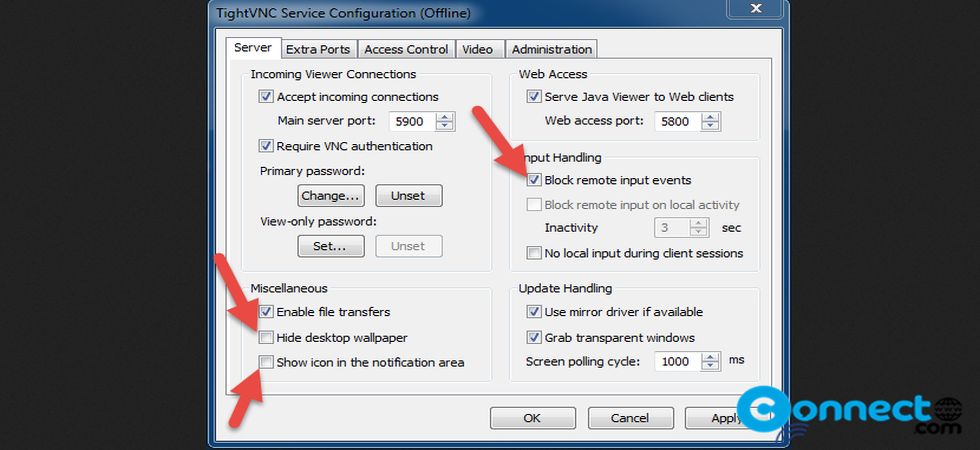

- #Tightvnc server configuration 4 monitors install#
- #Tightvnc server configuration 4 monitors drivers#
- #Tightvnc server configuration 4 monitors driver#
- #Tightvnc server configuration 4 monitors password#
- #Tightvnc server configuration 4 monitors windows 7#
Go to Start > Programs > TightVNC > TightVNC Server (Service Mode) > Stop TightVNC Service.Run net start tvnserver in the Windows command line.Go to Start > Programs > TightVNC > TightVNC Server (Service Mode) > Start TightVNC Service.To start the TightVNC Server service one-time:
#Tightvnc server configuration 4 monitors install#
If you did not install TightVNC as a service during install and wish to change that, the simplest way is to reinstall TightVNC.

TightVNC Server can run as either an application or service.Īs an application, TightVNC is started either manually or automatically after user login, and runs only for that user.Īs a service, TightVNC starts automatically when Windows boots, and runs no matter which user is logged in.
#Tightvnc server configuration 4 monitors windows 7#
This allows you to prevent the end user from being able to alter the VNC Server's settings.įor PCs running Windows 7 or older, it is also recommended to install the DFMirage Driver, available from the same Download page, for improved performance and responsiveness
#Tightvnc server configuration 4 monitors password#
#Tightvnc server configuration 4 monitors driver#
It is recommended you check with your PC vendor for any available driver and other software updates and install them.

#Tightvnc server configuration 4 monitors drivers#
Note: This page is provided as a reference only Userful staff may not directly assist in the configuration of applications for your organizations systems.įor best results, you should ensure all drivers on your system are up to date, particularly drivers for your video cards/display adapters. VNC clients and servers from different companies often work together as well, though some companies develop proprietary versions. Since VNC is a protocol, it is cross-platform compatible, meaning Windows VNC clients can connect to and control Linux or OSX VNC servers, and vice versa, etc. TightVNC is a mature, freely-available option that has existed since 2001. There are many different applications available that can function as VNC servers. VNC (Virtual Network Computing) is a standard, not an application. I choose 9001 so that you could forward tightVNC from PC2 at the same time: ssh -L 9002:localhost:9000 you can connect tightVNC from your remote machine using the addresses localhost:9001 and localhost:9002.This page provides basic instructions for installing and configuring generic VNC Server applications. You can set up the tunnel to PC1 with: ssh -L 9001:localhost:9000 connects to PC1 via ssh and forwards the adress localhost:9000 (from the view of PC1) to the port 9001 of the machine you execute this on. I don't know the tighVNC port but let's assume it's 9000. Just replace the port 22 with the port of that service.Īlternatively you can tunnel every service through ssh. The same can be done with every other protocol/service. Note that those connections can't work on default port 22 but on 1003. This means that every external request on port 10022 goes to port 22 (ssh) of your PC1.įrom your external PC you now need two ssh connections to IP 88.65.41.128. One from external port 20022 to internal ip & port 10.0.0.14:22.One from external port 10022 to internal ip & port 10.0.0.12:22.Now you have to set up two forwardings on your router: Make up two port number for your machines. Since you can forward a port only to one machine this is not an option in your case. If you had only one machine you could simply forward port 22. Let's play this through using ssh as example (every other protocol would work the same). At first you have to set up port forwarding on your router.


 0 kommentar(er)
0 kommentar(er)
